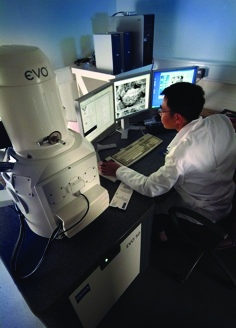Yesterday brought a welcome trip out of the sweltering environs of Engineer Towers to the blissfully air-conditioned offices of Imperial Innovations, for a chat with chief executive Susan Searle and commerical services director Brian Graves. As well as being a trip to South Kensington, it was a trip into what sometimes seems like a strange, parallel Britain: a Britain where engineering, science and technology are flourishing; where university laboratories are full of innovative people who can understand the commercial potential of their work; and where funding is available to launch new technology-based companies with a long-term plan to see them to profitability without unreasonable demands for rapid return on investment.

Of course, that isn’t a parallel Britain at all. It’s the real Britain, although you might not think it given the coverage that industry sometimes gets and the opinions of both the general public and, it has to be said, some of our readers. It has to be said, however, that the last part of that description — the funding and incubation of new businesses — can be very hard to find, and that’s where Imperial Innovations comes in.
As Susan Searle explained to me, Imperial Innovations started out as Imperial College’s technology transfer office, a role it still fills. However, over the past six years it has changed and developed, launching as an independent company in its own right with a listing on the AIM exchange, share placings and equity raising. It is now a serious venture capital player, with a market capitalisation of £400m. It works with four universities — Imperial, University College London, Oxford and Cambridge — to seek out opportunities in their science and engineering departments, identify their best way to market, find them top-quality management teams and, crucially, provide funding to get them to the point where they can make profits.
And then, they don’t sell out. ‘We don’t operate a rapid exit strategy,’ Searle said. ‘We’re in for the long term with these companies.’ The company’s success stories include Nexeon, the lithium ion battery technology specialist based on research into the properties of modified silicon as an anode, which last year won an Engineer Technology and Innovation Award and yesterday announced a £40m investment which will help build a UK manufacturing facility. Searle is certain that Imperial Innnovations will remain a Nexeon stakeholder for years to come.
This is the point, really. Imperial Innovations doesn’t perform this function out of altruism or patriotism, although Searle admitted to a thrill when one of her companies, electric motor specialist Evo Electric, attracted investment from major British engineering firm GKN in June. It invests for returns; it puts money in because it knows that it’s the best way to make profits. This is ingredient that’s been missing in finance in the UK for far too long: an understanding that, with the right match between technology, market and people, and with realistic expectations, you can make money out of launching technology companies in the UK. All you need is people who understand the concepts of risk and know that taking an idea from a lab and turning it into a commercial offering is a long-haul business.
So why aren’t there more operations like Imperial Innovations, reaping rewards from developing British engineering and technology? ‘It’s been a long journey for us, to get where we are,’ Searle said. ‘We can’t do it without the proximity to the people we work with, so we can’t branch out to more distant universities — if someone from Strathclyde were to approach us with a great idea, we’d have to turn it down, because we know how important it is to focus and building up my team here has been the rate-limiting step in our development. But what we do works, and there’s no reason why it shouldn’t work for other institutions.’
But of course, a realistic view of engineering in the UK is vital, including strengths and weaknesses, and that really should be part of the general public’s view as well. Searle commented that people don’t realise that these new companies are great places to work, and that the perception of engineering is a problem here. ’These are really exciting places — they are based on cutting-edge knowledge, they’re launching into fast-growing areas, and they need to find bright, innovative people for all their operations, whether it’s R&D, finance or marketing. We need to get the word out there that these sectors are set to thrive.’
On the way back from Imperial Innovation’s offices, craving more air conditioning before plunging into the sweaty hell of the Piccadilly Line, I popped into the Science Museum for a gawp at some rockets. I happened to be standing beside a father and his young daughter underneath the looming bulk of Black Arrow, Britain’s home-grown rocket, which successfully launched the satellite Prospero and was simultaneously cancelled 40 years ago this year. ‘We threw it all away,’ the father told his little girl, regretfully. ‘We invented all this and now we don’t have a space industry at all.’ The glum pair wandered off, completely ignoring a display about the development of Skylon. Being typically English and too polite to talk to strangers, I didn’t tell them about Britain’s flourishing space industry; about the communications satellites, the Earth observation research, the discovery machines, the Mars yard where the next Rover is being developed. Maybe I should have.





Nanogenerator consumes CO2 to generate electricity
Whoopee, they've solved how to keep a light on but not a lot else.